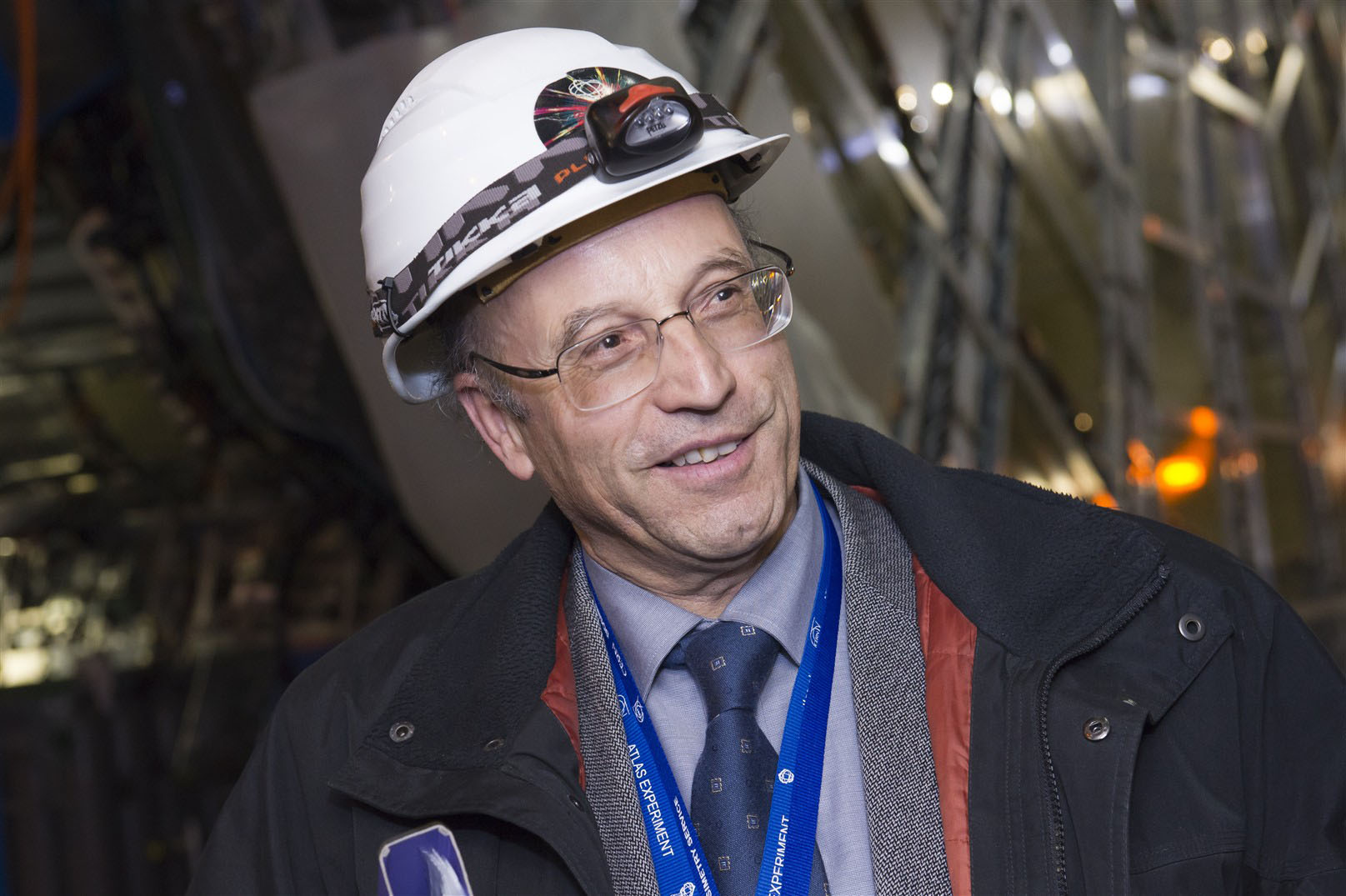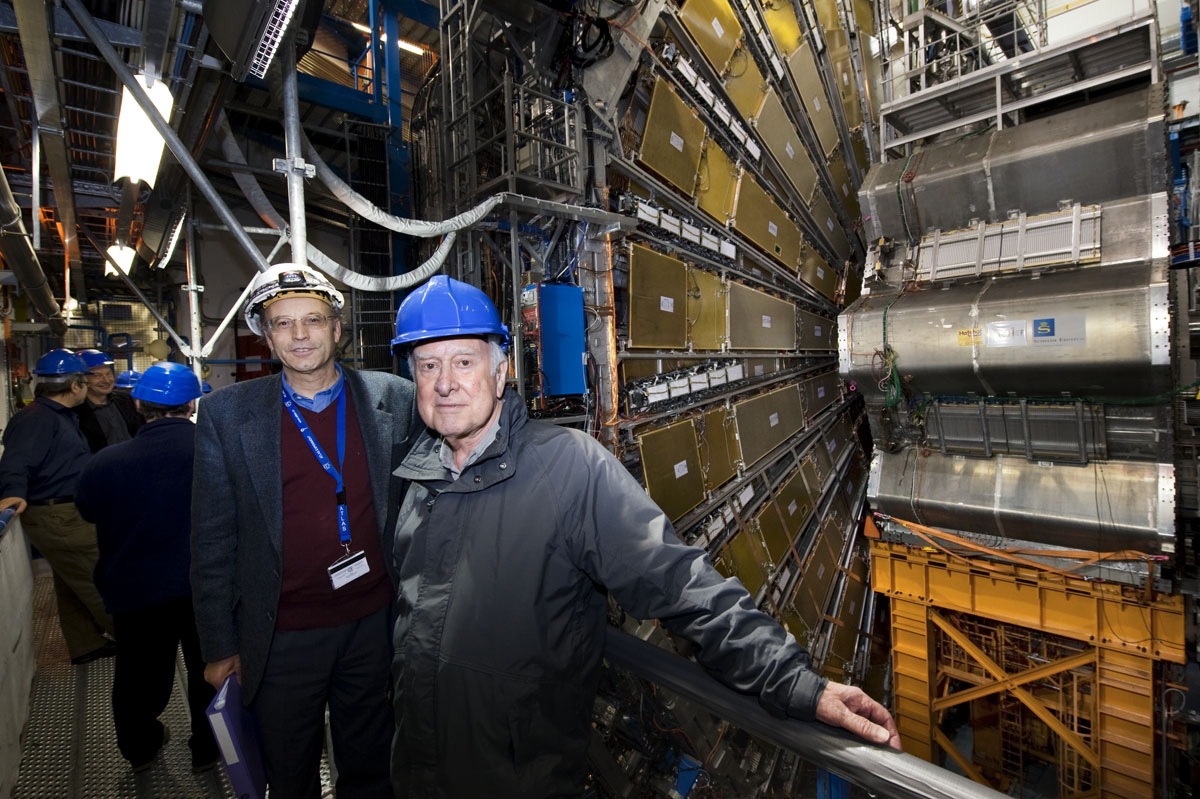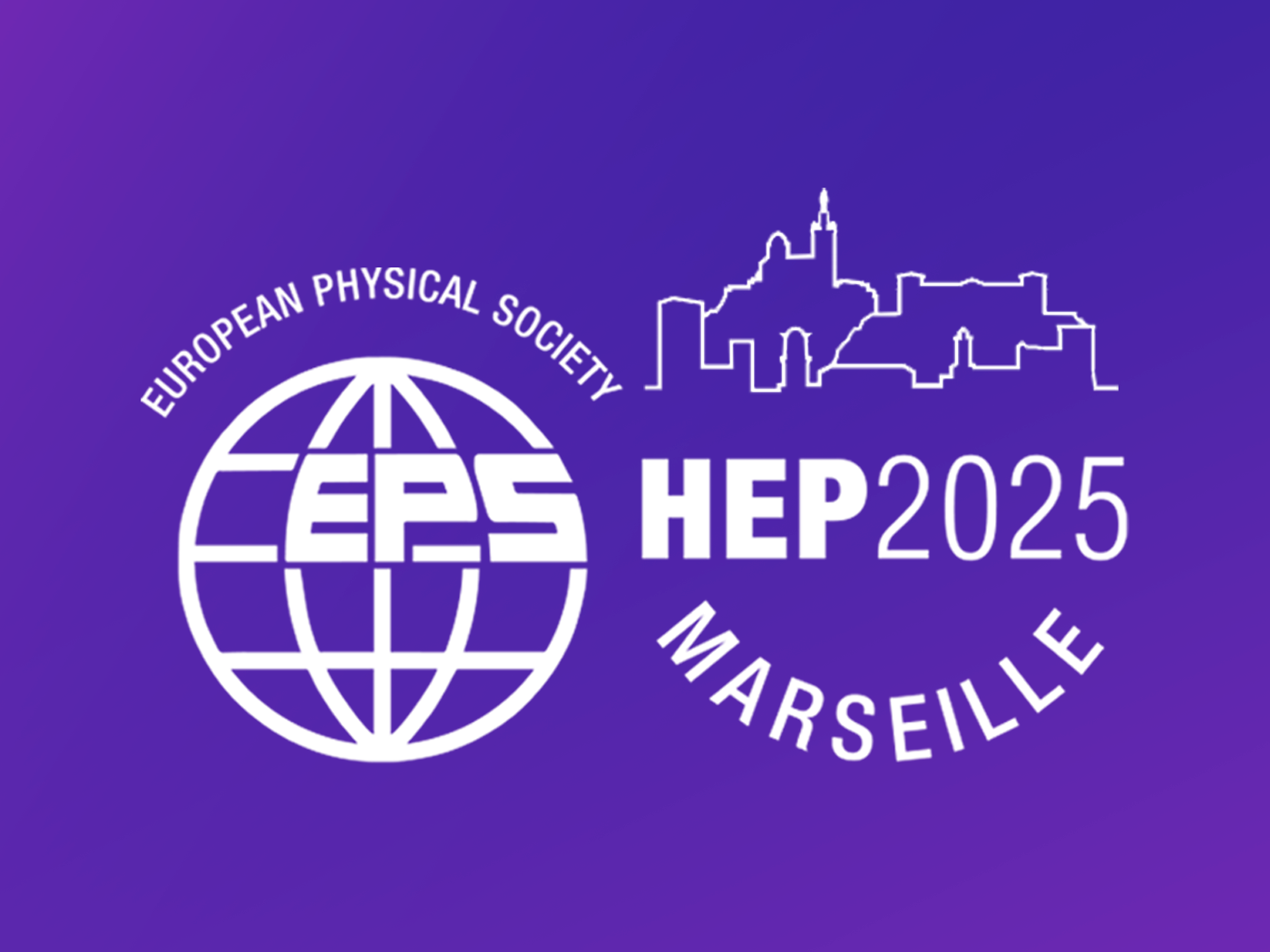Everyone Here Is Motivated By Physics
17 June 2013 | By

In June 1993, ATLAS and CMS were given the provisional go-ahead to submit technical proposals. Twenty years later, for the discovery of the Higgs boson, the European Physical Society has awarded the High Energy and Particle Physics Prize 2013 to the research teams of the ATLAS and CMS experiments. For their “pioneering and outstanding leadership roles in the making” of the experiments, the prize also goes to ATLAS' Peter Jenni and CMS' Michel Della Negra and Tejinder Virdee. We talked to Peter Jenni, who was spokesperson of the ATLAS collaboration for the first 15 years, on ATLAS' past and future. Excerpts:
What was it like for you when you started working on the Large Hadron Collider (LHC) and the idea of ATLAS?
I've been working on the LHC since 1984, when I was with the UA2 experiment. The Large Electron-Positron (LEP) Collider project was approved by then, which included a tunnel of 27 km circumference. It was clear that one could think of later putting a hadron collider into this tunnel. LHC was like dreaming of the future, and with ATLAS, we were preparing for it. Many people worked on the detector design and helped the collaboration grow. People felt it was the right time to begin building a coherent effort to look at different aspects of possible experiments. We started in a way that wasn't really ATLAS yet in 1989 in Barcelona. The ATLAS Collaboration came into being in Autumn 1992.
Why a hadron collider?
Professor Carlo Rubbia (Nobel laureate and a former CERN Director General) was one of the pioneers who pushed the LHC at CERN. I was a member of Rubbia's Long-Range Planning Committee and it was during a workshop in 1987 at La Thuile that we discussed the advantages of LHC. A hadron collider has the feature of enabling you to look at all possible Higgs masses. Nobody really knew the mass of the Higgs boson then. We also had competition from the Superconducting Super Collider in Texas, which would have been much bigger than the LHC, but it was cancelled in the early 90s.
ATLAS -- A Toroidal LHC Apparatus -- what factors led to the decision to have a toroidal system for the detector?
In a hadron collider, it is not really the hadrons that are colliding. Inside protons are quarks and gluons (which bind them together). When two of them collide, they each have a certain fraction of the momentum of the proton. In some extreme cases, they have almost 100 percent of the beam energy -- in most others they only have a few percent -- so the collision is not at rest in the centre of mass. The products are sometimes boosted in one direction or the other along the beam line. To measure the configurations, it's good to have a lot of magnetic field strengths in these forward and backward directions. You have more of that in a toroidal magnet configuration than in a solenoid. What you really want for discovery physics is to have the same analysis capability everywhere in the direction perpendicular to the beam axis. But, the component perpendicular to the beam (pT) decreases as particles go forward. So, for a given pT one has to be able to measure higher total momentum particles in the forward direction, compared to those at 90 degrees. That's one argument. The other is: you can have the magnetic field outside the calorimeter, which makes it easier to build a good calorimeter. This is a technical but important argument. The price you pay is that the magnet configuration is more complex when compared to CMS, which chose a different approach with one big, strong solenoid.

What was it like for you to lead such a large collaboration of this nature, with so many people, for so many years?
There were many people involved from the beginning. I had a permanent position at CERN, which made it easier for me to also work as coordinator for ATLAS. It was difficult at first, in the sense that you really have to find a consensus. You cannot order people to do one thing or another. It was also very important to get the resources needed, and that's something people tend to forget. It's a very expensive experiment and it was not an easy task to get the resources, money and people. You only get them when the community from a given country actually wants to build some part of the detector. There were difficult moments when we realized we needed more resources. When the SSC was closed, many American physicists joined ATLAS and CMS. Another thing we had were the continuous discussions with the LHC Committee (LHCC), which reviewed us and which was needed to approve the next steps for our project realization. We had many interesting discussions with the LHCC, and still do. After 15 or so years as spokesperson, it was clear to me that the time had come to step down and let people like Fabiola Gianotti from the younger generation, who was already one of my deputies in the last years, lead the next phases of the experiment.
What holds the many people in the collaboration together?
This question comes up a lot, especially from management theorists. The driving component here is that everyone is motivated by the physics, and also we have no choice except to work together. This we see positively. It helps if people have a common motivation. We are colleagues and friends, but sometimes, one is friends with someone else out of necessity. There is no way that purely individual wishes can be satisfied. For instance, when we were discussing detector options, at some point, people had to agree that decisions had to be made. What's important is that the people involved understood the process that led to the decision, and that they had the chance to have their arguments heard. Most people are reasonable enough to understand that if there are options A, B, and C, you cannot have all three. It would be easier if only A worked but that's not always the case. Most of the time, all three options work and you have to consider the work people invested in the years prior when deciding. Right now, it's quite different in the analyses. There are many smaller analysis groups who work alongside.
The LHC is shut down for the next two years, and already you've found the Higgs boson. How far do you think you've come and how far do you think this will go?
This was a dream, and in the beginning, it went a bit slowly. Still, the physics only just started. We haven't yet achieved the full energy of the machine, which will allow further exploration of new physics. We were lucky to have already found the Higgs boson within the limited accumulated data. But there's much free exploration ahead of us. There are many unanswered questions and I'm optimistic that there will be a lot more to come.
Do you plan to go back to practicing physics?
I don't have much free time anymore and there's been a whole new generation of computing tools and languages. I admire those who return from leadership positions to do productive physics. I regret it a bit that I cannot do that. I talk about physics a lot. There are so many travels and public talks that I have little time left to pursue physics. I am also involved in many advisory committees and over the last years in the European Strategy for Particle Physics. By having been in management and contributed to ATLAS, always motivated by the physics, I have maybe made it possible for many others to pursue physics. Of course, if it hadn't been me, someone else would have done my job. But people don't seem too unhappy with the work I've done and that gives me a lot of pleasure.
Why did you choose to pursue particle physics?
The mysteries of nature, life, plants, mysteries of the sky. That is where you get the first thoughts about physics. Simple stuff like gravitational laws. I want to understand the laws of nature, which is admiring it in some sense. Particle physics looked to be something fundamental and worthwhile. Once in the business of doing physics, I worked on the ISR (the first hadron collider), SLAC in California, the SPS collider, and was part of the W and Z discovery experiments. I was caught. It was clear that the LHC experiments would be the next step for me, and there was plenty of motivation. We are exploring something new. One always thinks that the greatest thing will be a completely unforeseen discovery.
What is the future of physics, and why do you think the young generation should consider pursuing particle physics?
The future of particle physics is bright and exciting as rarely before! A clear programme lies in front of us to investigate with great accuracy the newly discovered Higgs boson, both at the LHC and possibly with a future electron-positron collider. Is it ‘THE' Higgs boson or ‘A' Higgs boson? There must be physics beyond the Standard Model which cannot explain for example the Dark Matter in the universe. LHC and future colliders will explore such open questions, and ATLAS is already a great instrument for doing so in the next decades to come. Working in our field is an exciting activity for students and a great school for learning about international collaboration, solving problems creatively, working in teams, and other skills that are useful beyond academia.



